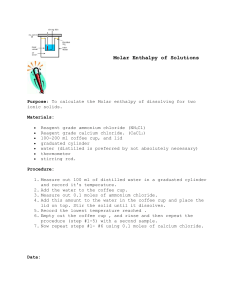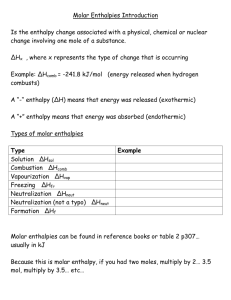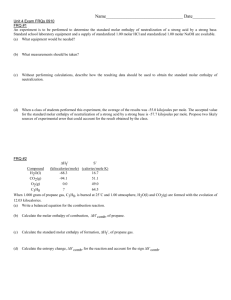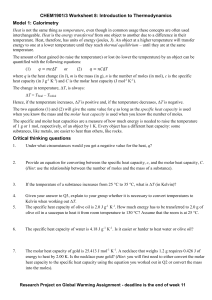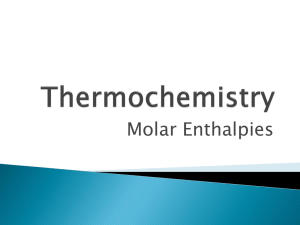prelab molar enthalpy
advertisement
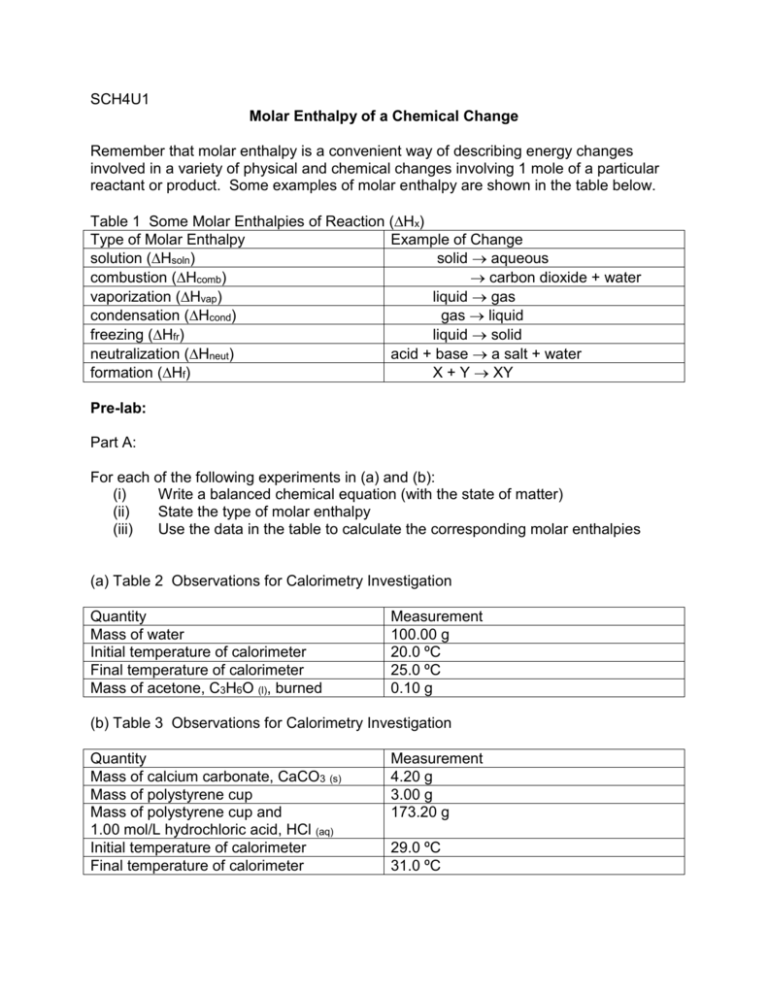
SCH4U1 Molar Enthalpy of a Chemical Change Remember that molar enthalpy is a convenient way of describing energy changes involved in a variety of physical and chemical changes involving 1 mole of a particular reactant or product. Some examples of molar enthalpy are shown in the table below. Table 1 Some Molar Enthalpies of Reaction (Hx) Type of Molar Enthalpy Example of Change solution (Hsoln) solid aqueous combustion (Hcomb) carbon dioxide + water vaporization (Hvap) liquid gas condensation (Hcond) gas liquid freezing (Hfr) liquid solid neutralization (Hneut) acid + base a salt + water formation (Hf) X + Y XY Pre-lab: Part A: For each of the following experiments in (a) and (b): (i) Write a balanced chemical equation (with the state of matter) (ii) State the type of molar enthalpy (iii) Use the data in the table to calculate the corresponding molar enthalpies (a) Table 2 Observations for Calorimetry Investigation Quantity Mass of water Initial temperature of calorimeter Final temperature of calorimeter Mass of acetone, C3H6O (l), burned Measurement 100.00 g 20.0 ºC 25.0 ºC 0.10 g (b) Table 3 Observations for Calorimetry Investigation Quantity Mass of calcium carbonate, CaCO3 (s) Mass of polystyrene cup Mass of polystyrene cup and 1.00 mol/L hydrochloric acid, HCl (aq) Initial temperature of calorimeter Final temperature of calorimeter Measurement 4.20 g 3.00 g 173.20 g 29.0 ºC 31.0 ºC Part B: Enthalpy of neutralization can be expressed per mole of either base or acid consumed. If the base is the limiting reagent, the moles of base or the corresponding moles of acid required to completely consume the base should be used to determine the molar enthalpy change. On the otherhand, if the acid is the limiting reagent, the moles of acid or the corresponding moles of base required to completely consume the acid should be used to determine the molar enthalpy change. Read Investigation 5.2.1 on pages 348 –349 in your textbook. Given that 30.0 mL sample of 1.00 mol/L sulfuric acid is added to 50.0 mL of 1.00 mol/L sodium hydroxide solution in polystyrene calorimeter, (a) determine the limiting reagent (b) using the limiting reagent, calculate the corresponding amount of moles of sulfuric acid or sodium hydroxide Part C: Calculate how to make 100.0 mL of 1.00 M solution of sodium hydroxide (i.e. determine the mass of NaOH to dissolve in 100.0 mL of water)



